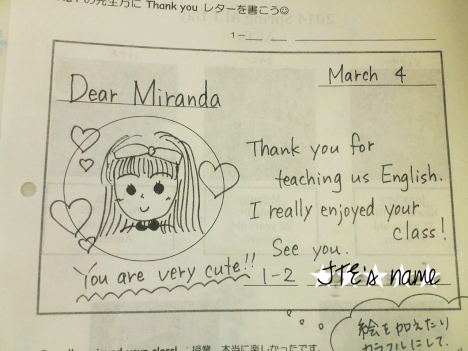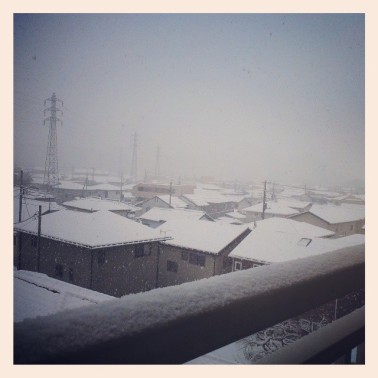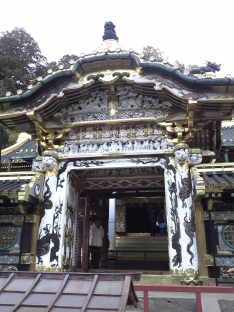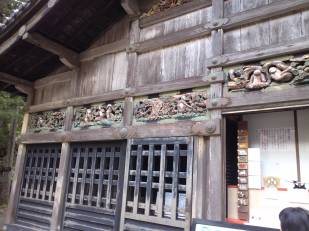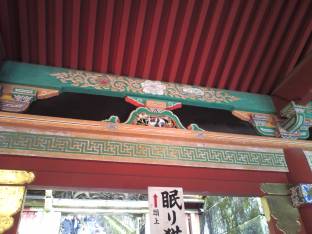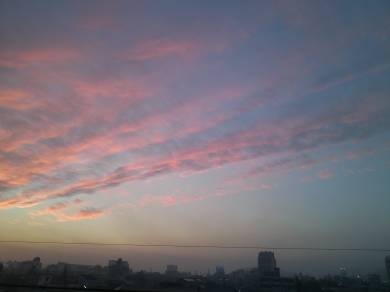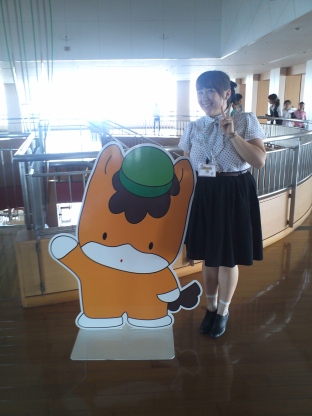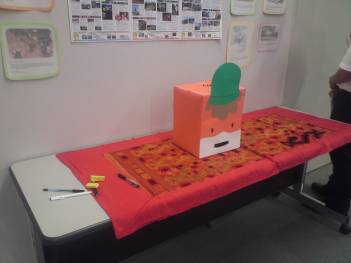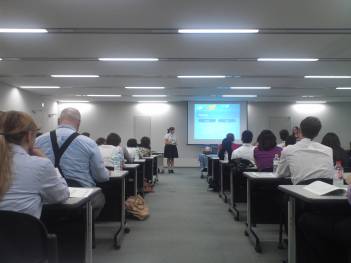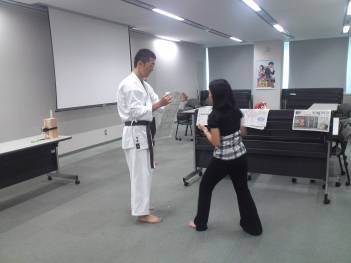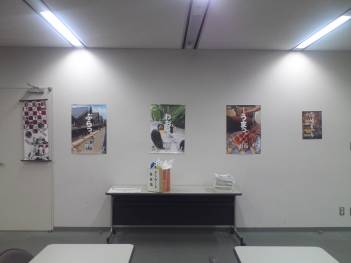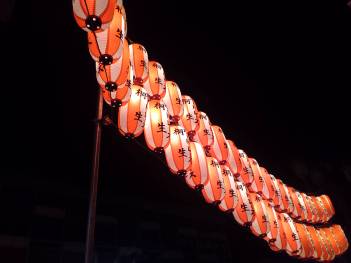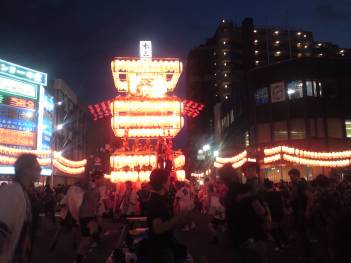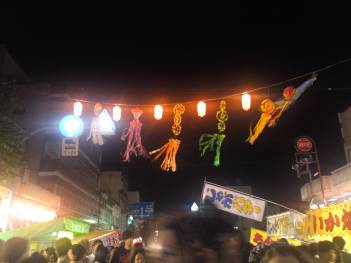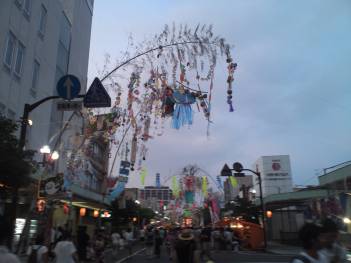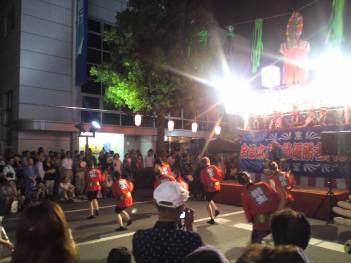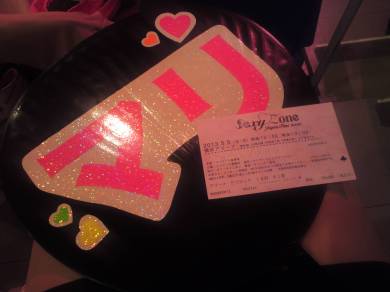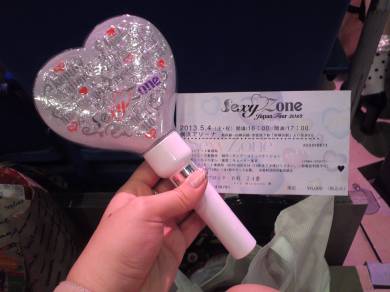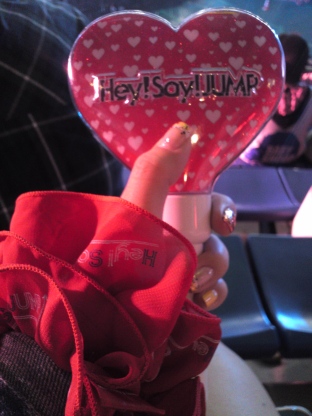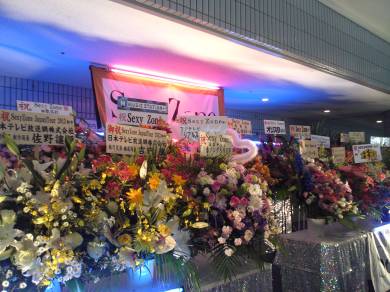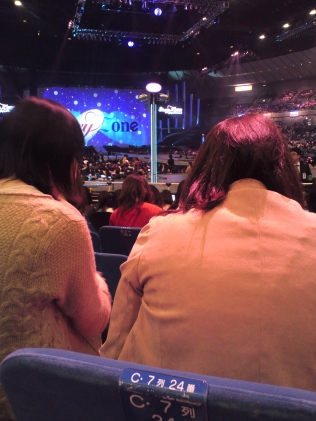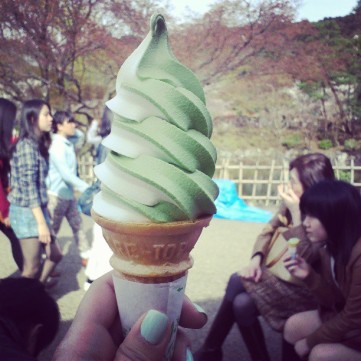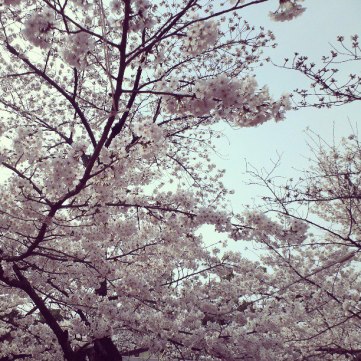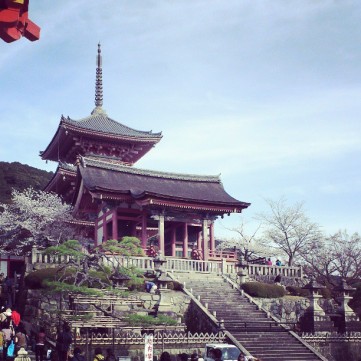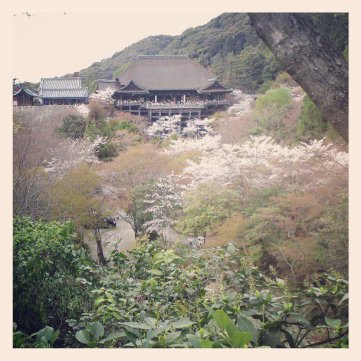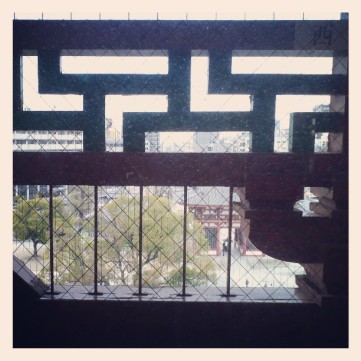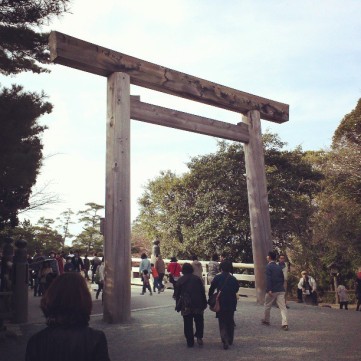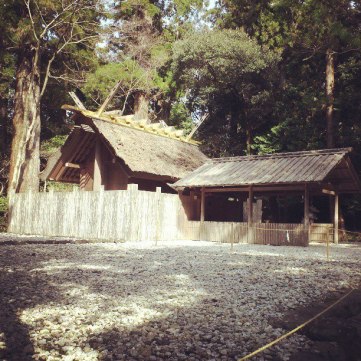It’s been two years since my JET interview, so I honestly can’t say that I remember it perfectly. But I do have a lot of friends who interviewed for JET from a variety of backgrounds, so I’ve tried to compile everything I’ve heard into this little summary. It’s a bit long, but I hope it’s helpful! A lot of the reasoning I give for things here is my own hypothesis or else things I’ve heard for others, and I absolutely don’t mean to say that if someone got a certain type of question, it necessarily reflects one way or another on them. I just want to help out anyone looking for a sort-of walkthrough of the JET interview. I can only speak from my own experience, which I know doesn’t necessarily match up with the experiences of others based on their consulate, home country, or even just the people interviewing them, but I hope that this is helpful nonetheless to a variety of aspiring JETs preparing for their interviews!
First, about a month beforehand, you’ll either receive or make an appointment with the consulate by email. I know in past years some consulates have let you choose, but I didn’t have that choice in New York since it’s one of the two busiest in the country. I was assigned my time and told I had to be there at that time, so I needed to make arrangements with professors and stuff. I stayed with a friend in New York; if you’re doing your interview more than a few hours’ car ride, I’d advise staying overnight. It takes a lot of stress out of making sure you get there on time and looking nice. I’ve heard so many horror stories about not having time to change or inclement weather making people late, and I’m definitely glad I stayed over.
Most people will tell you to wear a black or dark grey or navy suit, but I wore a grey skirt and a muted green jacket (from the same line of separates, so they matched but weren’t the same colour) because my body is a weird shape (petit but curvy) and finding a nice suit that would fit me well would have been difficult, time consuming, and pricy, so I had to shop the sale racks. But in the long run, I actually got complimented by the consulate staff and the JET alumni who were there on having a “bit of colour” despite still looking business-ready, so I don’t think you need to be panicking if your suit is a little outside the black/grey/navy range. I wouldn’t, however, wear anything that’s too bright, or a suit that’s too light (like khaki) because that will really be completely different from everyone else. I would advise that you wear a button up shirt rather than a regular blouse or high-cut cami, because despite the fact that those are 100% okay as a part of your suit for basically everything else (including orientations and graduation and stuff once you’re on JET), if I recall correctly, almost everyone was wearing collared button ups at the interview. Obviously this goes without saying, but no cleavage and no short skirts. I wore stilettos because they were the only black pumps I had and I was fine, but I wouldn’t wear anything outside of black, brown, navy, or beige shoes. People will try to tell you that you should wear a skirt, but I think pants suits are 100% fine. In my experience, the embassy staff wear an embassy uniform (similar to desk attendants in Japanese businesses, with a vest, a hat, and a cutesy tie), the professors/otherwise established Japanese community members wore suits, and the JET alums tended to have the least formal dress, wearing upscale business casual (a blazer and slacks and a colourful blouse for the girls, a blazer and slacks and a light coloured shirt with a colourful tie for the guys). The atmosphere won’t be so stifling that you’ll stand out if you’re even wearing one speck of colour. I borrowed a professional-looking handbag from a friend; some people carried briefcases. As long as your bag is a muted tone and looks business-like, don’t worry about it. At the New York consulate, I could leave it in the lobby and the JET alums there will watch it.
I know it’s obvious to get there early, but you can arrive seriously early and it will be fine; don’t worry about it being awkward. There’s a place to wait, so even if you show up more than an hour in advance, they’ll accommodate you and you can sit in the waiting room and chat with the JET alums and ask them any questions. Getting into the consulate might be a bit terrifying, but they’re pretty good about placing guides along the way to get you to the right place.
They’ll call you back to your interview room when it’s time. Your interview panel will very likely consist of three people: a JET alum, a Japanese college professor or some other esteemed member of the community, and a consulate employee. I’ve heard people have had various good cop/bad cop experiences, but for me, the JET alum and the professor were both very friendly, while the consulate employee was more strictly professional.
The interviewers will all have your application and statement of purpose in front of them. The questions they ask you will be based on how high your application scored in the original screening process, as well as what they felt was strong and/or weak about your application. I’ve heard that people who scored lower on the application step will be asked harder questions (if they’re nervous about how you’ll handle the pressure of standing in front of a classroom or if they think you might be a flight risk or something) while people who scored higher are asked more general questions. There are a few categories of questions that they’ll ask from, and most people get at least one question out of most of these categories.
Category One: About your application
(I’m sure everyone gets these)
They asked me:
✓ “You have here that you’d like to be placed in a city. How would you feel if you were places in a small town, instead?”
✓ “You lived in Tokyo for a semester during study abroad, is that correct? What would you say your biggest challenge was in Japan?”
✓ “I see you’ve had teaching experience teaching ballet to children. How do you think this will help you on JET? How do you think your JET experience will differ, and what will you do to make up for that difference?”
Question my friends got:
✓ “I see you requested the Kanto region. Why was that your top choice?”
✓ “I see you don’t have any teaching experience. How to you plan to handle standing in front of a class of kids?”
Category Two: Why?
(I don’t recall getting these but I know lots of people get them)
✓ “Why did you choose the JET programme?”
✓ “Why do you want to live in Japan?”
✓ “I see here your major in college was Japanese language. Why did you choose to study Japanese?”
※ People always say you shouldn’t talk about anime, dramas, pop culture, j-pop, etc here, but I think it’s really fine as long as you make it clear that you care more about the job itself than going to Japan to meet Kyari Pamyu Pamyu or something. What I think is really important here is that your interest in Japan and JET is more than just esoteric interest or blind fascination in Japanese culture. I find more often that the hole academics from good universities who studied Japanese in college fall into is trying to seem too ~academically interested in Japan. What the program people obviously care about is that you’re interested in working with kids and that you’re adaptable to anything– being in the middle of a metropolitan area in Osaka or being in the tiniest village in the northernmost point of Hokkaido. If you give them the impression that you have interest and a passion for teaching/education/cultural exchange without seeming like you have huge expectations of Japan, I think that would be your best bet. I’m not saying that I think people go in trying to seem inflexible, but rather that I feel like people often make the mistake of trying to seem cultured and educated and end up seeming like they missed the point
Category 3: The Mock Lesson
(There’s almost no chance that you won’t get a question from this category)
They asked me:
✓ “Please do an example of a short self introduction you could give a class when you taught them for the first time.”
Questions my friends got:
✓ “Please give an example lesson showcasing a holiday in your country.”
✓ “I see you’re a _______ major. Please give an example of how you’d try to explain a _______ concept to your students.”
✓ “Please give us an example of how you’re explain a grammar point in simple English to your students.”
※ This section seems to be primarily to see two things: 1) how fast you act on your feet, 2) how you present to a room of people. I’ve heard that the panel will give you various degrees of trouble pretending to be kids in the class if they’re unsure about how you’ll work under pressure. For example, during my friend’s interview, someone on the panel raised her hand and asked (completely unrelated to the lesson) if all Americans have guns. They do seem to shape their question based on what they want to see from you; for example, my friends who got asked to explain their major, the focus seemed more to get them to project/present to the class and see their teaching style and how they would explain more than to catch them off guard since it was a topic they knew well. The grammar lesson or holiday lesson seem to be aimed more at people who they want to see both how they work under pressure and how they explain things. I really have no idea what the point of my question was. All I can guess is that they wanted to see if I could be animated and make something mundane seem interesting to the kids? I offered to do a ballet dance for them since I studied ballet for 18 years, and managed to do it in a pencil skirt and 4-inch heels, and that seems to have won me some points.
Category 4: The Big Overarching Questions
(I imagine everyone gets these in some way or another.)
They asked me:
✓ “We can see that you love living in Japan and are anxious to work there. But what will you give back to the community?”
Questions my friends got:
✓ “What do you hope to get from your experience in Japan? What do you hope to give back?”
✓ “What goals do you have for your time in Japan?”
✓ “How do you hope to promote cultural exchange while in Japan?”
Category 5: The Hypothetical Situations and Trick Questions
(I didn’t get any of these, but I’ve heard that they can be anywhere from simple questions about potential situations in Japan to what seems like a trick question with no answer.)
✓ “What would you do if you were walking down the street and an elderly Japanese person started yelling racial slurs at you?
✓ “What would you answer if an elementary school student asked you what the Americans bombed Hiroshima and Nagasaki?”
✓ “What would you do if your principal started making sexual comments to you or touching you inappropriately at a work drinking party?”
✓ “How would you react if you were told as a female teacher that you were expected to serve tea to the male teachers?”
✓ “How would you handle being sexually harassed in a public place, like on a train?”
✓ “What would you do in a situation where the Japanese English Teacher doesn’t show up for class and you’re alone in the classroom?”
✓ “What would you do if a student suddenly had a violent outburst?”
✓ “What would you do if the Japanese English Teacher started criticizing your English in front of the class?”
Category 6: The Quiz Questions
(I didn’t get any of these either, but I’ve heard that people who scored lower on their paper application or who seem like good teaching candidates but the interviewers are worried they don’t know anything about Japan get asked these questions. Alternately, they might ask questions about the culture of your home country if they’re afraid you’re not on the right page about cultural exchange.)
✓ “Name three important Japanese historical figures and explain briefly why they’re important.”
✓ “Name five Japanese prefectures.”
✓ “Who is the current Prime Minister of Japan, and what party is he from?”
✓ “What do you know about the Japanese education system?”
✓ “Please name three important Japanese historical events.”
✓ “Please explain the government system in your home country.”
✓ “Please explain the three most important historical events in your home country.”
✓ “Please tell us about your favourite famous person/music artist/movie/TV series/aspect of your home country’s pop culture.”
✓ “Please tell us about your favourite American president/British king or queen/historical figure, etc.
Category 7: The Japanese Portion
※ The Japanese portion is possibly the most unpredictable portion of the whole interview. Because there’s no Japanese language requirement for the programme, this section only serves to 1) make sure you didn’t lie or misrepresent yourself on your paper application and 2) check your level so that you can be placed accordingly. Many placements request specific Japanese levels (my city requests people with intermediate to advanced Japanese, for example) and different schools require different Japanese abilities (with elementary school requiring the most and high school requiring the least usually), so they try to gauge your level. Sometimes, they ask questions that are actually involved in the content of the interview, like “what do you hope to give back to the community?” Sometimes they ask random questions. Sometimes they ask you to give a self introduction or talk about yourself freely. I don’t really know much about what they might ask, so I’ll just summarize my experience below.
✓ “I see here your major in college was East Asian Studies. What, specifically, did you study?”
(I responded that I studied Japanese art and literary history for the most part, and that my area of interest was art and literary history in the Edo Period. I mentioned that I was currently writing my thesis on “The Great Mirror of Male Love” by Ihara Saikaku, and was finding it very interesting.)
✓ “Wow, that’s interesting. How did you get interested in Ihara Saikaku?”
(I responded that I studied samurai fiction during my time abroad and that his works, and in general, the topic of pop culture and popular fiction in the Edo period had caught my interest.
✓ “I see on your application that you’re interested in graduate work in this area of study. How do you plan to continue your research?”
(I responded that I was interested in comparing current Japanese popular literature and pop culture with Edo period popular culture and literature, for example, the idea of fan goods, doujinshi, and BL being comparable to a lot of Edo pop culture surrounding kabuki. The interviewer laughed at my mention of BL, but seemed interested. I mentioned I’d read an article in Japanese class about how anime fan culture mimics Edo period artisan culture, and thought that there was some merit in pursuing the idea. At this point, it seemed like the interviewer, a Japanese professor from Columbia University, wanted to keep chatting, but the consulate employee said that we were almost out of time and needed to move on.)
Category 8: Miscellaneous
(I don’t know what categories these go in, but they’re things I’ve heard of/experienced coming up in the interview)
They asked me:
✓ “How do you feel about moving to Japan after the earthquake in Fukushima? How does your family feel? Are they against your decision, or worried about your safety?”
✓ “What do you plan to do next year should you not be accepted into the JET programme?”
Questions I’ve heard being asked:
✓ “I see you have a tattoo. Are you aware of the social implications of tattoos in Japan? How do you plan to explain it to your coworkers and students? What would you do if you were required to keep it covered at all times?”
✓ “I see from your transcript that you’ve failed some classes/gotten some poor grades/did poorly in school. Do you want to say a few words about that?”
Lastly, they’ll ask you if you have any questions for your interviewers. You probably won’t have too much time, but try to think of one or two questions beforehand so that you have something to say to show you’re giving the job significant thought.
After the interview, they’ll shake your hand and let you back out to the waiting room. In my experience, the JET alums there will probably ask you how it was and tell you good job and otsukare and stuff like that. And then you’re done!
My advice would be to not fixate on the interview or get too stressed. I wouldn’t think of it as something you have to “study” for or anything like that. As long as you know your own application and yourself and have thought through why you want to do JET, you should be fine. I think that I benefitted from doing a mock interview with a friend specifically for JET and also a mock job interview with my college’s career center. I got really helpful feedback from the interviewer (who did interviews for an extracurricular leadership program for kids from lower socio-economic level areas, so it wasn’t 100% irrelevant), and I got a feel of how I could best express myself doing the JET-specific questions with a friend.
There’s really no way to know exactly what sort of thinking goes into what questions someone gets asked in the interview, but what I have here is based on what I’ve gathered from friends and JET coworkers. I think, generally, the interview does reflect what they thought of the applicant’s paper application and statement of purpose, and they definitely will refer to them while interviewing, but as long as you stay calm and know what you wrote, you should be fine.
Good luck!
Tags: JET

